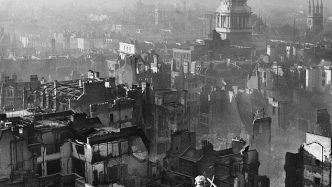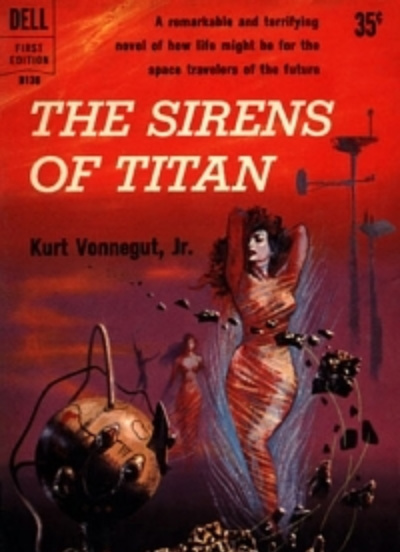The 17th century, a hundred year period between 1601 and 1700, is regarded as the age of cultural and scientific revolution in Europe. This period saw the rise of colonialism and the emergence of the very first colonial trading mega-corporation.
In Asia, the gunpowder empires — Ottomans, Safavid, and the Mughals reached the height of their power. According to modern scholars, the 17th century Mughal Empire, which ruled most of the Indian Subcontinent, boasted the world’s single largest economy.
From the emergence of modern scientific concepts and cultural movement in Europe, the weakening Ming Dynasty in Asia, and the European conquest of America, we have compiled every major event that occurred in the 17th century.
Table of Contents
The 1600s. From The Year 1600 to 1609
1601
The Russian famine of 1601-1603 breaks out, resulting in two million deaths, or 30 percent of the Russian population. It was perhaps the most devastating famine in the nation’s history (in terms of deaths proportional to the total population).
1602
Italian missionary Matteo Ricci designs the earliest known European-style Chinese world map on the behest of Wanli Emperor of the Ming Dynasty.
 Matteo Ricci’s map of China
Matteo Ricci’s map of China
The Dutch Republic government establishes the United East India Company by merging smaller trading companies into one large corporation.
1603
March 24: The succession of James VI of Scotland to the throne of England and Ireland unites the two kingdoms. James VI’s reign also marked the beginning of the British colonization of the Americas.
Tokugawa Ieyasu establishes the Tokugawa shogunate, a feudal military government, in Japan. He, however, surrendered his title (shogun) just two years later in 1605.
1606
November 11: The Fifteen Years War, also known as the Long Turkish War, between the Ottomans and the Habsburg Monarchy ends with the Treaty of Sitvatorok. It was the first major conflict between the Ottomans and European powerhouses in the 17th century.
1607
April 4: Iskandar Muda (literally “young Alexander”) becomes the twelfth Sultan of Aceh Darussalam (part of modern Indonesia), one of the earliest Islamic sultanates in Southeast Asia. Under his regime, the sultanate emerged as a regional powerhouse, both politically and economically. Aceh’s influence over the Strait of Malacca played a crucial role in their rise to prominence.
1608
Hans Lippershey, a German lens maker, obtains a patent for the first-ever refracting telescope.
The 1610s. From The Year 1610 to 1619
1610
July 4: The Polish-Lithuanian Commonwealth forces capture Moscow after defeating the Russian (and Swedish) armies in the Battle of Klushino. It was part of the Polish-Muscovite War of 1905-1618. The victory showcased the effectiveness of the Polish Hussars, the elite cavalry of the Polish Crown.
1611
The King James Bible is published under the direction of James VI and I (King of Scotland and later King of England and Ireland). The King James version remains the most popular Bible translations in history.
April 28: The Royal University of Santo Tomas is established in Manila by the Dominican Order (a Catholic religious order). It is the oldest existing university in the Philippines, as well as Asia.
1613
February 21: A decade-long political crisis in Russia, known as the Time of Troubles, ends with the succession of Micheal I (the House of Romanov) as the Tsar of Russia. The period is marked with anarchy and chaos throughout the nation following the death of childless Feodor I, the last Tsar of the Rurik dynasty in 1598.
 In the Time of Troubles | By Sergey Ivanov
In the Time of Troubles | By Sergey Ivanov
1614
Sottish mathematician John Napier publishes Mirifici Logarithmorum, in which he introduced the concept of logarithms. His work included defining elements and tables related to natural or Napierian logarithm.
1615
The Dutch East India Company fails to capture Malacca (today’s Malaysia) from Portuguese control after an unsuccessful attack. The Dutch East India Company would start new hostilities with smaller kingdoms in Southeast Asia and Oceania later this year.
November 18: In Japan, the Tokugawa Shogunate declares war on its biggest rival, the Toyotomi clan, in the siege of Osaka. The battle ended with the defeat of the Toyotomi clan, ensuing Tokugawa Shogunate’s absolute control over the nation.
1618
May 23: The Third Defenestration of Prague takes place in Bohemia. Defenestration literary means to throw someone out of the window. Two Catholic Regents and their secretaries were thrown out Bohemian Chancellery building by Protestant estate lords.
Subsequently, the Bohemian estates (mostly protestant) starts an open revolt against their overlords, the Habsburg dynasty (Roman Catholics). It marks the beginning of the Thirty Year’s War, a religious conflict between the Catholic and Protestant states in central Europe.
Late-1618: The beginning of the Manchu invasion in China. In the early 17th century, the Ming dynasty, which ruled China since 1368, began to crumble under numerous revolts, economic breakdowns, and military campaigns by the Manchu-led Qing dynasty.
The 1620s. From The Year 1620 to 1629
1620
The Ottoman Empire and Poland wage war over control of Moldavia, a traditional subject-state of Poland. One of the principal causes of this conflict was the rising influence of the Polish-Lithuanian magnates (nobles) in Moldavia’s internal politics, which the Ottomans strongly opposed.
November 8: The Battle of White Mountain, a pivotal battle in the early phase of the Thirty Year’s War, occurs. The battle resulted in Catholic victory over Bohemians.
1621
September 2-9: The Ottoman invasion of the Polish-Lithuanian Commonwealth resulted in the Battle of Chocim (or Khotyn). It was perhaps the most remarkable conflict in the recorded history of the Commonwealth.
1626
November 18: The construction of Saint Peter’s Basilica is completed in Vatican City. The Basilica is believed to be the burial place of Saint Peter, one of the twelve apostles of Jesus. It is the world’s largest Church (by capacity).
1627
The Aurochs (or urus), a wild cattle species with a size comparable to that of European bison, were last seen. It became the first recorded mammal to go extinct. On the other hand, the first species to go extinct due to current climate change is the Bramble Cay melomys.
The 1630s. From The Year 1630 to 1639
1631
December 16: Mount Vesuvius erupts, destroying numerous villages and killing at least three thousand people. Including the events of 1660, 1682, 1694, and 1698, Mount Vesuvius erupted five times in the 17th century.
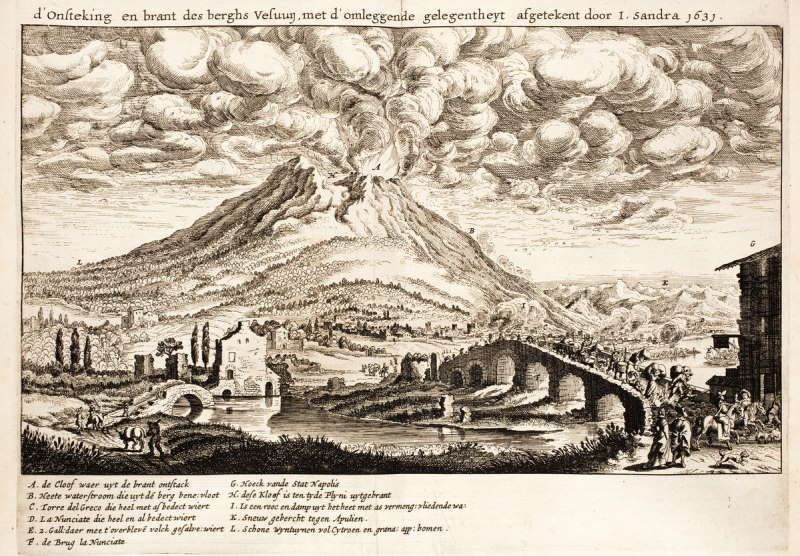 Eruption of Mount Vesuvius in ‘Danckerts Historis’ by Joachim von Sandrart and Matthias Merian
Eruption of Mount Vesuvius in ‘Danckerts Historis’ by Joachim von Sandrart and Matthias Merian
1632
November: The Thirty Year’s War reaches a critical stage with the Battle of Lutzen between Sweden (Protestant) and the Holy Roman Empire. The battle marked the death of influential Swedish king Gustavus Adolphus, which eventually led France to join the war.
The construction of the Taj Mahal began in Agra, India. One of the Seven New Wonders of the World, the Taj Mahal, was recognized as a UNESCO World Heritage Site in 1983.
1636
March 26: Utrecht University is established in Utrecht, the Netherlands. The prestigious Dutch university alumnus includes 12 Nobel Prize laureates and 13 Spinoza Prize (Dutch equivalent of the Noble Prize) winners.
September 18: In the United States, Harvard University is established, as the nation’s first higher studies institution, in Cambridge, Massachusetts.
1637
February: Tulipmania, the earliest economic bubble in the recorded history, ends in the Netherlands. During the bubble, the contract prices of fashionable tulip bulbs reached astronomically high in the Dutch Republic.
 Tulip price index by Earl Thompson, professor at the University of California
Tulip price index by Earl Thompson, professor at the University of California
Mid 1637: Rene Descartes publishes one of his most influential works, “The Discourse on the Method” in France. It laid the groundwork for modern philosophy, as well as the philosophy of science. Rene Descartes is often cited as the father of modern philosophy.
The world’s first public opera house, Teatro San Cassiano, opened in Venice, Italy.
December 9: The Manchu-led Qing dynasty (China) invades the Kingdom of Joseon (Korea). The Joseon dynasty, which ruled Korea for five centuries since 1392, was seen as a traditional ally of the Ming dynasty. After weakening the Ming dynasty, the Qing ruler diverted his focus on Joseon to neutralize an anticipated threat.
1639
Widespread social unrest leads to civil wars in the Kingdoms of England, Ireland, and Scotland. These internal conflicts are collectively known as the Wars of the Three Kingdoms.
October 21: The Dutch navy defeats Spanish naval forces at the Battle of Downs near the English Channel, effectively ending Spain’s maritime dominance. The Spanish navy was the most powerful naval force in the world in the late 16th and early 17th centuries.
The 1640s. From The Year 1640 to 1649
1642
The Khoshut Khanate is established in the Tibetan Plateau (a landlocked region in Central and East Asia) by Oirat prince Güshi Khan. Upon its establishment, the administrative powers of the Khanate were granted to the 5th Dalai Lama.
French inventor Blaise Pascal designs the first operational mechanical calculator or Blaise calculator.
December 13: Dutch explorer and merchant Abel Tasman became the first European to reach Tasmania, Fiji Islands, and New Zealand.
1644
The Mauritanian Thirty Year’s War, or Char Bouba war, breaks out in western Sahara between migrant Arab Maqil tribes and indigenous Berber tribes of Sanhaja. The conflict, which ended with Maqil victory, led to widespread Arabization (influence of Arab culture and linguistic on non-Arab population) in the region.
Hong Taiji of the Qing dynasty becomes the emperor of China, effectively ending the Ming dynasty rule.
1648
Early-1648: The Khmelnytsky Uprising, a Cossack rebellion, takes place in Polish-Lithuanian Commonwealth. Although the Commonwealth army defeated the forces of Ukrainian Cossacks, it led to a sequence of wars (the Deluge) and civil unrest over the next two decades leading to the demise of the Polish-Lithuanian Commonwealth.
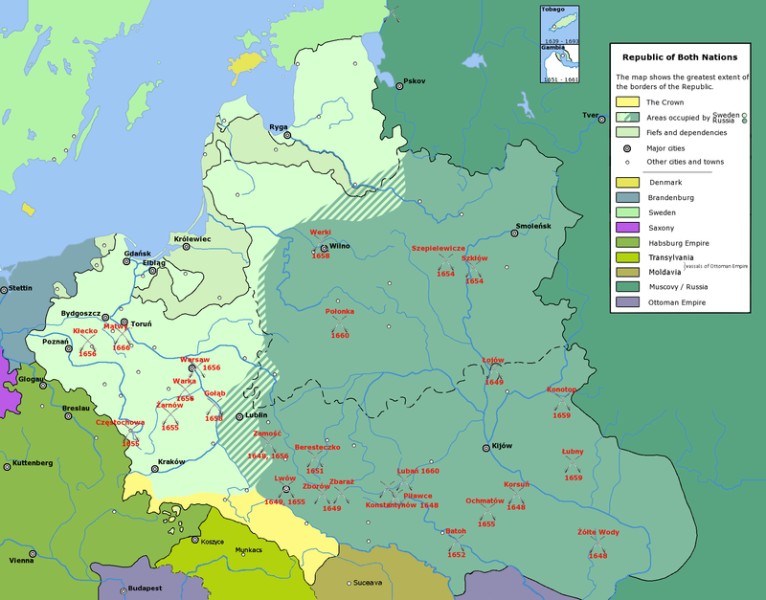 The Polish-Lithuanian Commonwealth after the Second Northern Wars
The Polish-Lithuanian Commonwealth after the Second Northern Wars
October 24: The Thirty Year’s War ends with the Peace of Westphalia, a set of two peace treaties signed by delegates from various European states in Westphalian cities of Münster and Osnabrück (part of modern-day northern Germany).
1649
January 30: King Charles I is executed at Inigo Jones’ Banqueting House at the Palace of Whitehall, Westminster. After being defeated by the Parliamentarians in the English Civil Wars, the King of England, Scotland, and Ireland, Charles I was tried and convicted of high treason, which led to his public execution.
The 1650s. From The Year 1650 to 1659
The 1650s was a relatively calm period in the 17th century.
1650-1652
1650: Francesco Redi became the first to challenge the theory of spontaneous generation, a notion that living creatures could emerge from nonliving matter, by showing that maggots arise from eggs of flies.
1652: The Dutch East India Company establishes Cape Town, the largest city and legislative capital of South Africa.
1654
German scientist and inventor Otto von Guericke invents the vacuum pump. His design consists of a two-way flap to remove air from any connected vessel.
1658
Five years after the Taj Mahal is completed (in 1653), Aurangzeb dethrones his father, Shah Jahan, to become the ruler of the Mughal Empire. Aurangzeb was the last effective Mughal ruler.
 Taj Mahal | Image Courtesy: Matthew T Rader
Taj Mahal | Image Courtesy: Matthew T Rader
The 1660s. From The Year 1660 to 1669
1660
May 29: King Charles II restores monarchy in England after returning from exile in Europe. From 1649 to 1660, England, Scotland, and Ireland were under the Commonwealth political structure and ended only after the death of Richard Cromwell, the Lord Protector of the Commonwealth.
November 28: A royal charter by King Charles II establishes the Royal Society in England. The Royal Society serves as the UK’s national academy of sciences.
1662
The first public bus service with a fixed route, timetable, and fare system is launched by Blaise Pascal in Paris.
February: Koxinga, a Ming loyalist, establishes the Kingdom of Tungning, a part of today’s Taiwan. Following the Manchu/Qing invasion in mainland China, Koxinga captured several Dutch outposts in southwestern Taiwan to use the island as a temporary Ming base. The kingdom lost its sovereignty in 1683, after being conquered by the Qing.
1663
English polymath Robert Hooke became the first to observe microorganisms through a microscope. Two years later, in his book, ‘Micrographia,’ Hooke coined the term ‘cell.’
1664
British forces captured the Dutch colony of New Amsterdam and renamed it New York (the United States) in honor of Duke of York and later king of England James II.
1665
The last major outbreak of bubonic plague occurs in England. It killed approximately 100,000 people, about one-fourth of the city’s population, between 1665 and mid-1666. In 2016, a study conducted on excavated skeletal remains of the victims revealed that the plague was caused by Yersinia pestis bacteria.
March 4: The Second Anglo-Dutch War breaks out between the Dutch Republic and England to monopolize and secure trade routes. The conflict ended with the Treaty of Breda, an apparent Dutch victory.
1666
September 2-6: The Great Fire of London engulfs inner parts of the city, from the Tower of London to the fleet street beyond St. Paul’s Cathedral. The fire destroyed more than 13,000 houses and as many official buildings. It almost completely devastated the cathedral of Saint Paul, after which a new structure was built in its place.
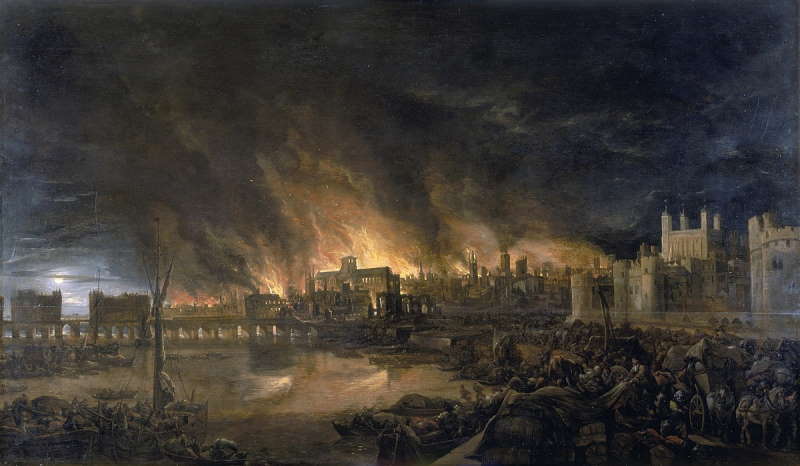 The Old London Bridge during the Great Fire of London
The Old London Bridge during the Great Fire of London
1668
February 13: The Treaty of Lisbon (not to be confused with an EU treaty signed in 2017) effectively ends the dynastic union between the kingdom of Portugal and the Spanish Crown (the Iberian Union) that existed since 1580. It placed the House of Braganza replacing the Spanish Habsburg as Portugal’s new ruling dynasty.
The 1670s. From The Year 1670 to 1679
1670
May 2: The Hudson Bay Company (HBC), the oldest corporation in North America, is established in modern-day Canada following a royal charter. For the next 200 years, the company operated under British authority until the ratification of Rupert’s Land Act 1868.
1672
The Ottoman forces invade Polish Ukraine (east Slavic region), initiating another Polish-Ottoman War between 1672 and 1676. A disorderly Polish parliament and lack of funds to maintain a powerful army resulted in a crushing Polish-Lithuanian defeat and losing most of its Ukrainian territories to the Ottoman Empire.
1673
After Robert Hooke, Dutch scientist Antoni van Leeuwenhoek became only the second individual to observe microbial life using self-designed microscopes. Leeuwenhoek’s observations paved the way for microbiology to become a scientific discipline. He was the first to make documented microscopic observations of muscle fibers, RBCs, spermatozoa, and blood flow (capillaries).
 Leeuwenhoek’s microscope designs | By Henry Baker
Leeuwenhoek’s microscope designs | By Henry Baker
1674
In India, Shivaji Bhosale I establishes the Maratha Confederacy after a series of victories against the Sultanate of Bijapur and later the Mughal Empire. The Marathas were largely responsible for ending the Mughal rule in the Indian Subcontinent.
1678
The hostilities, which started with the Franco-Dutch War in 1672, between the Kingdoms of France, Spain, Denmark, Sweden, the Dutch Republic, and the Holy Roman Empire ends with the treaties of Nijmegen.
The 1680s. From The Year 1680 to 1689
1680
The earliest known description of a gunpowder engine, or explosion engine, is presented by Dutch inventor Christiaan Huygens.
In London, Jonathan Miles establishes Jonathan’s Coffee House, a popular social gathering place throughout the 17th and 18th centuries. The coffee house acted as a workplace for stockbrokers, as most of them were not allowed in the Royal Exchange at that time. The oldest known systematic display of stock prices and commodities appeared here.
1682
April 9: While exploring the Mississippi River, French explorer Rene-Robert La Salle came across an unmarked territory (modern-day Louisiana), which he named “La Louisiane” after Louis XIV and claimed it for France.
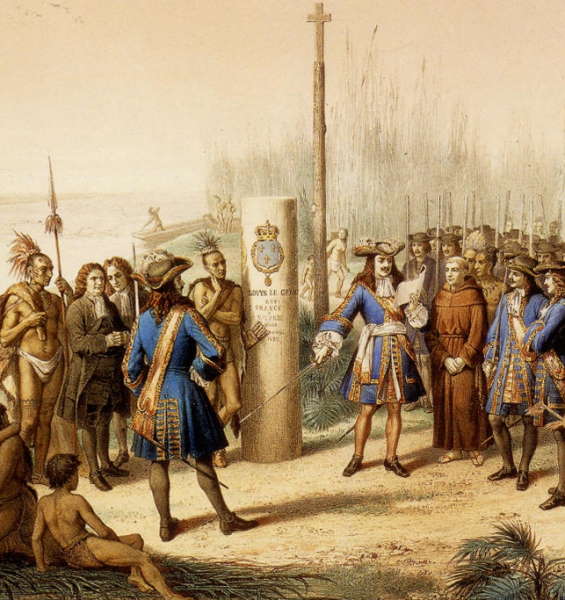 La Salle claiming La Louisiane for France | By Jean-Adolphe Bocquin
La Salle claiming La Louisiane for France | By Jean-Adolphe Bocquin
May 7: Peter the Great becomes the ruler of Russia. Under his regime (1682-1725), Russia witnessed unprecedented territorial gains and became one of Europe’s major powers. He is also responsible for replacing traditionalist socio-political ideas with modern systems based on the ideology of the enlightenment.
1683
July 14: The Great Turkish War begins, pitting the League to Polish-Lithuania, Russia, and Habsburg Monarchy against the Ottoman Empire.
September 12: The Battle of Vienna takes place following an Ottoman siege on the Imperial city. The battle was significant in more than one way. It was the first time that the Holy Roman Empire and the Commonwealth fought the Ottomans in a joined effort. The battle also involved the largest cavalry charge seen in history.
 John III Sobieski (King of Poland) meeting Leopold I, Holy Roman Emperor during the Battle of Vienna | By Artur Grottger
John III Sobieski (King of Poland) meeting Leopold I, Holy Roman Emperor during the Battle of Vienna | By Artur Grottger
1687
July 5: The first edition of Newton’s Mathematical Principles of Natural Philosophy (Philosophiæ Naturalis Principia Mathematica) is issued. Principia introduced Newton’s laws of motion, which laid the groundwork for classical mechanics or Newtonian mechanics.
1689
August 27: The Treaty of Nerchinsk, the first-ever treaty between the Qing dynasty China and the Russian Empire, is ratified.
December 16: The Bill of Rights 1689, an Act stating fundamental civil rights for the citizens and certain constitutional requirements for the next monarch to inherit the British Crown, receives the Royal Assent (an act of parliament). It established the principles of free elections, freedom of speech within the parliament, and the right of petition.
December 20: The rising French influence in Europe near the end of the 17th century led major powers, including the Habsburg Monarchy, Dutch Republic, and England, to form an anti-French coalition, known as the Grand Alliance. The coalition fought against France in the Nine Year’s War.
Read: 13 American Inventors Who Changed The World
The 1690s. From The Year 1690 to 1699
1692
February: Salem witch trials begin in Massachusetts, America. It was perhaps one of the deadliest hitch trials outside Europe in history. A total of nineteen people (fourteen women and five men) were executed, and five died in jail.
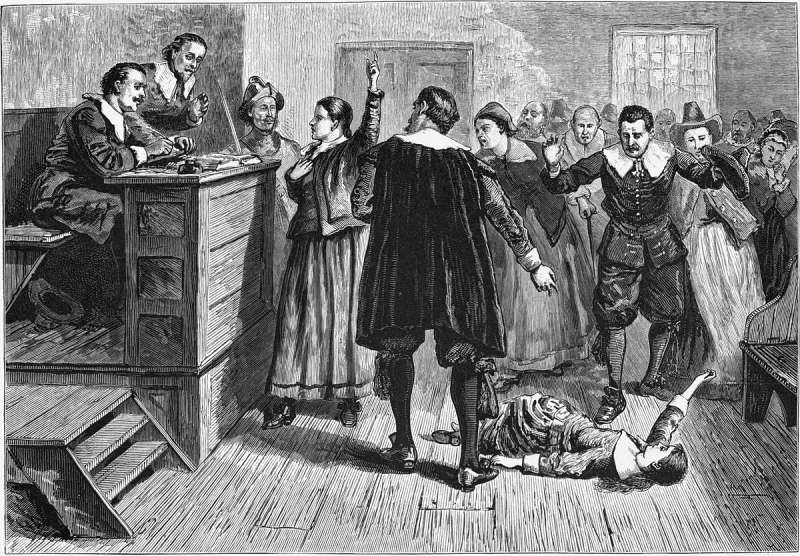 An 1876 illustration of the Salem Witch trial in colonial America
An 1876 illustration of the Salem Witch trial in colonial America
1694
July 27: The Bank of England is founded in the United Kingdom. Initially, for about 250 years since its creation, the bank was under private control. It was only 1964 (during the Attlee ministry) that it was nationalized. It is the eighth oldest bank in the world.
1697
March 30: Sikh spiritual leader and philosopher Guru Gobind Singh establishes the Khalsa, a religious community based on Sikhism.
The earliest recorded proper cricket match, officially known as a First-Class match, takes place in Sussex, England.
Read: 18th Century: Important Events | Individuals | Inventions
1699
January 26: The Great Turkish War ends with the Treat of Karlowitz. The treaty resulted in the transfer of most of the Ottoman Hungry to the Holy Roman Empire.
July 14: Thomas Savery, a British engineer, demonstrates the first-ever functional steam engine. He patented steam engine design a year before on July 2, 1698.

